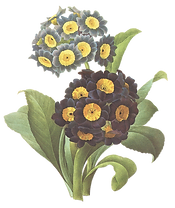Tougher Than it Sounds
- Cynthia Thomas
- Feb 14, 2020
- 3 min read

Like the “Boy Named Sue” the flower named “Pansy” is anything but. These cheerful, brightly colored early bloomers are some of the hardiest plants available – especially this time of year, when little else can withstand the cold nights. Pansies love cool temps and are notorious for poking through the snow on the first sunny days of the season.
In fact, this member of the viola family is commonly called “Johnny Jump Ups” because of this trait to welcome spring with such vigor. That is, of course, if you planted them in the fall.
According to an Exploratory Shakespeare article, the flower is also known as Love-in-Idleness and was described by the poet in "A Midsummer Night’s Dream", from a popular tale that portends the flower was originally pure white until it was struck by Cupid’s arrow. The wound from the arrow formed the dark purple center of the petals. This tale of Cupid, coupled with the flower’s name, from the French “pensée,” meaning thought, and its heart-shaped petals, has linked the pansy with ideas of love, lovers, and dreaming.
Pansies belong to the class of plants known as biennials. They take two years to complete their lifecycle (annuals = one season, perennials = return season after season). Like spinach, kale, parsley, onion, carrots and beets, many flowers are technically biennial, to include:
Black-eyed Susan (Rudbeckia hirta)
California poppy (Eschscholozia)
Canterbury Bells (Campanula medium)
Forget-me-not (Myosotis)
Foxglove (Digitalis)
Hollyhock (Alcea)
Honesty (Lunaria)
Poppy (Papaver)
Stock (Matthiola incana)
Sweet William (Dianthus barbatus)
If left undisturbed in the garden, often these plants seem to be perennial because the seeds they drop will continue blooming year after year. If the plant is pulled up or the ground disturbed, however, the life cycle will end abruptly. This often happens to pansies because they wilt in the summer heat and most people replace them at that time.
My favorite way to plant them is in the ground in the fall and then to enjoy them a second season in the spring – the same as I do for my spinach. (When you do this, you want to be sure to pick a color that looks good in your garden both seasons.)
But what I find most fascinating about pansies – other than getting two years out of a nursery flower, and here I’m showing my frugal gardener tendencies – is their toughness. Some flowers are fussy with water and sunlight, but pansies need little attention to be happy. In fact, the garden variety that we are familiar with were hybridized from the little violets that grow wild in Europe and were once known as “heartsease.”
I like this name the best – Heart’s Ease. Some plants – and people for that matter – just give you that sense of relief. They’re not fussy. They don’t ask for much. In fact, with just a little notice, you are both the better for it.
I’m reminded of my mom at this stage of her life, where just the smallest of efforts to reach out to her matter so very much. Her memory has been declining and the effect is that she sometimes comes off “tough” or less then kind, shall we say. People her age often speak their mind and it’s easy to see why people start avoiding them.
But wouldn’t that be a shame? Just when the elderly need to be thought of the most, for us to dismiss them? They are not weak or frail or crotchety, as much as they are just in need of love.
I know today is the celebration of romantic love, and certainly we should recognize it as such, but let us remember those who often go overlooked in our society, and reach out with a smile or card or call to those who may seem tough, but truly are so very tender.
Did you know pansies are edible?
The leaves and flowers of pansies and violas are edible and high in vitamins A and C. The flowers impart a strong flavor and have been used to make syrup, flavored honey and salads. Both the leaves and flowers can be used as a garnish, such as on cold fruit or cream soups. The flowers are also useful as a dye or tincture.























Comments